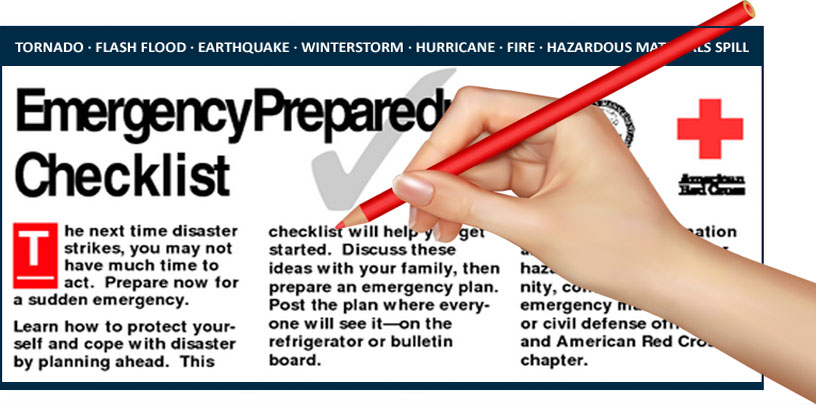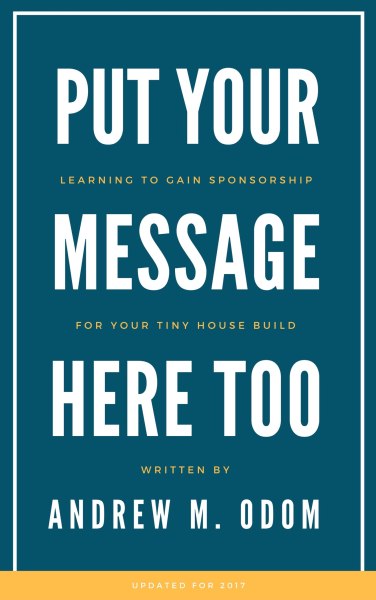Your most precious assets have nothing to do with the car you drive, the type of phone you use, or the clothes you wear. They’re replaceable. The things that are most important aren’t actually things, they’re people. Your family members are irreplaceable, and this is why having health insurance for your family members from bear river insurance is important. You’d do anything in your power to make sure they’re healthy and happy, right?
So, do you have an emergency preparedness kit and plan?
If you don’t, you’re not alone. The vast majority of people have no emergency preparedness kit for their families. There is no first aid kit. The list of contact information has gone missing and is woefully out of date. And if there were an emergency, your caregivers and children probably wouldn’t know what they’re supposed to do.
We take a lot for granted. We live under the false belief that “it won’t happen to us.” Yet every single day there is a household accident, illness, or traumatic event that could have been helped with a health emergency preparedness kit and plan.
What Does Family Health Emergency Preparedness Mean?
Thanks to natural disasters like Hurricane Katrina, emergency preparedness has taken front stage in the news and in the minds of those who are in areas often hit by natural disasters. Homeowners can now get help with claims through public adjusters, e.g., at LMR Public Adjusters, when they get hit by a storm or hurricane. FEMA, the Federal Emergency Management Agency, now offers checklists, tips, and plans for how families can deal with emergencies.
We’re not only talking about natural disasters. We’re talking about the everyday health emergencies that happen in homes around the country on a regular basis. We’re talking about children being attacked by animals, falling and breaking bones, or having an allergic reaction to something. We’re talking about mom, dad, or even older relatives having a stroke or heart attack. We’re talking about life-changing accidents and events that are commonplace – yet we’re not prepared for them.
The good news is that getting prepared is pretty easy and once you have your plan in place and you’ve built your kit, the upkeep takes little dedication and even less time. It’s something that can save a life and make the difference in the health, safety, and well-being of your most beloved assets – your family.
Over the next few pages we’ll take a look at what goes into your family emergency kit, what a contact list is and who should be on it, as well as important emergency numbers to have on hand. We’ll wrap it up by talking about how to create a system to maintain your family health emergency preparations so all of your hard work now pays off down the road.
The goal is to create a kit and a plan that will keep your family safe now and ten years from now. Let’s start by looking at how to put together a family emergency health preparedness kit.
What Goes Into a Family Emergency Preparedness Kit?
First things first; do you have a first aid kit? If you do, when was the last time you updated it? If your first aid kit is like that of the vast majority of families then it has a few Band-Aids, a few alcohol pads, and maybe some gauze or an ace bandage.
Even more common is to have “first aid” items in the home but not have them organized in a central area. The medications may be scattered in drawers and cupboards. The bandages may be under the bathroom sink. And the hydrogen peroxide is so old that the lid is rusty and you’re not sure you can get it open.
The good news is that you have some first aid items. You’re prepared for cuts and bruises. The bad news is that you’re not prepared for much more. The first item in a family health emergency preparedness kit is a comprehensive and well put together first aid kit.
This is a kit that may contain items like airway openers, splints, and even a blood pressure gauge. It may also contain items like a thermal blanket, antihistamines for allergic reactions, aspirin for heart attacks and a CPR shield. Cold packs, a wide assortment of bandages, and antiseptic are also items that are necessary and useful.
Your emergency preparedness kit should be sturdy, durable, and waterproof. Many people use a tackle box or toolbox or a waterproof duffle bag to store their items. You can, of course, buy a pre-made first aid kit. You can also make your own.
Make a list of all of the medications, allergies, and relevant health information about every single member of your family. Begin organizing your kit based on their needs. For example, if your child has an allergy to bee stings you’d want an antihistamine for a mild allergic reaction and an EpiPen for a severe allergy. The list of medications and how to administer them should be part of your family health emergency kit.
Another component of your kit is where you’re going to store it. Think about where your family spends most of their time. Look for a place that is both convenient but also out of the reach of little ones. A bright red bag is often easy for people to spot and can save time in an emergency.
Age specific
Cater your kit to the age of the people in your family. For example, if you have infants, your CPR mouth shields should be infant size. Small children would need child-appropriate aspirin and pain medications whereas adults would need regular strength or extra strength. Small children need more small bandages. However, small bandages rarely serve a purpose for adults and teenagers.
Make a list of the items you need and decide if you’re going to buy a pre-made kit and add to it, or put your kit together yourself. The next item on your health emergency preparedness checklist is to begin to make your emergency contact list.
Your Emergency Contact List
The next important component of your family health emergency preparedness kit is your emergency contact list. With people changing phones and moving, this is a list that can quickly become outdated. It’s important to make sure that your list is up to date.
Creating your list
Make a list of all of the people that can help in an emergency if you’re not home. These people might be your neighbors. They might be close friends that can drive to your home quickly and of course they likely include your family members.
As you compile your list there are a few things to keep in mind.
- Write it for a stranger. Assume that whoever is reading your contact list doesn’t know you or these people very well. Make sure that the information is legible and organized.
- Organize by priority. As you make your list, place the most important and perhaps most trusted person at the top. For example, if your mom and dad live next door then they may be at the top of the priority list. Who do you want this stranger to call first in the event of an emergency?
- Note the relationship. Next to the person’s name and phone number, also add their relationship to you. Are they family? Friends? Pastor or rabbi? How are they connected to you? This will help people determine who has the ability to make health and medical decisions for your family members.
- Consider adding the address of the person to your contact list. This can also help emergency responders know where the person is located. It’s not always easy to tell where someone lives by their area code because cell phones can be taken with a person when they move.
- Include permissions. Some family members may have permission to make medical decisions for you and your family members. If this is the case, make sure that the notification or permission is in the health emergency kit and that it’s noted somewhere on your contact list that they have permission.
- DNR – It’s also important that if someone in your family has a DNR (Do Not Resuscitate), that the information is copied and posted not only in your home but also kept in your first aid kit. With older family members being cared for at home, DNR notifications can be important information for emergency responders.
Your contact list should be kept in a waterproof sleeve or protector. Consider keeping one copy in your first aid bag and another copy posted somewhere in your main living area. Many people keep both their kit and their contact list in the kitchen where they’re easy to find, store, and use.
Next, we’ll take a look at important emergency numbers to have on hand. Before you call a friend for help, it’s a good idea to call the authorities.
Important Emergency Numbers and Information to Have on Hand
In addition to the phone numbers for your emergency contacts – the friends and family you can turn to when you or a caregiver needs immediate help, there are several other phone numbers that are good to have on hand. Make sure that you compile a complete and accurate list and keep it with your other emergency contact and preparedness information.
Here are a few of the important emergency numbers to have on hand:
- Poison control – This phone number is particularly important to have on hand if you have small children. It’s amazing what they get into and many common household items can be toxic to little ones. Poison control can make a difference between a trip to the emergency room and immediate action.
- ASPCA poison control – If you have a pet, keep the phone number for the animal poison control on hand too. Other important animal phone numbers include:
- Veterinarian
- Closest emergency veterinarian services
- Pet insurance
- If your animal is micro chipped then you’ll want to have the phone number for the location service handy too.
- Doctors and physicians – List the names and numbers for all family doctors and physicians. If you call after hours, you’ll be sent to their emergency answering service which then gets a hold of the doctor so they can call you back.
- Hospital emergency room – What’s the phone number for your local hospital emergency room? If you have more than one hospital in your area, write down all of the locations, names, and phone numbers. This can come in handy when you’re driving someone to the emergency room. You can give them a heads-up.
- Fire department – While the fire department doesn’t generally focus on health emergencies, they do often respond to them. If they’re closer to you than the hospital and ambulance, you might receive a visit from them instead of the hospital’s ambulance services.
- Health records – Keep copies of your family’s health records in the packet as well. Keep them up to date, including any information about vaccinations, illnesses, medications and so on.
- Medical directives – We’ve talked about DNR records. There are also other medical directives to keep in your health emergency kit. If you have a living trust or specifications about your health care decisions, then those should be kept in the kit where they’re easily found.
Finally, you may want to keep the phone number for your local pharmacy on hand. These contact numbers as well as any important documents and information should be kept up to date, as it’ll be helpful on getting a pharmacy coupon if you need. Next, we’ll wrap it up by taking a look at how to create a simple plan to keep your family health emergency kit up to date.
How to Make Sure Your Family Emergency Health Kit Stays Up to Date
Medications go bad. First aid kit items can lose their effectiveness over time. People move, doctors change, and your health decisions and information changes too. If you don’t keep your family health kit up to date, the inaccuracies and out of date products can cause problems. Let’s take a look at a few ideas to help keep your family emergency kit up to date.
The twice-yearly review
One easy way to make sure your kit is accurate and your medications and supplies haven’t expired is to schedule a review twice a year. You might, for example, review your kit on June 1st and December 1st.
Go through each item in your kit and make sure it hasn’t expired. Review all of your medications and make sure they will not expire in the next six months. Replace any items that are expired or will soon expire. Also, review your contact list and make sure the information is accurate. Delete or edit any necessary information.
The list maker
If you prefer to keep a running tally of what is up to date and what information or supplies need replacing, make a list of all the medications and supplies and their expiration dates. Organize the list chronologically with the item that will expire first at the top of the list.
As items expire you can toss them and replace them with new items. Put the newly purchased items back on your list with their new expiration date. Also, with this method you’ll want to make sure you change any contact or health information as it changes since you won’t be conducting a semiannual review.
A combination approach
Finally, you can conduct an annual review of your contact and health information. Make sure all of the phone numbers, addresses, and health records are up to date. You can also keep a list of all medications and supplies and replace them as they expire. Keep in mind that most medications and first aid kit supplies have a long shelf life, at least a few years, so you shouldn’t need to constantly replace items in your family health emergency kit.
Once you’ve put your kit together and created a plan to keep it up to date, make sure that everyone in your family, care providers, and guests know where the kit is. You’ll be able to rest much easier knowing you’ve taken the necessary steps to protect the lives of your loved ones. Accidents and illnesses happen and now you’re as prepared as possible to manage them.
Downloadable Resources:
72 Hour Emergency Kit
.doc | .odt



